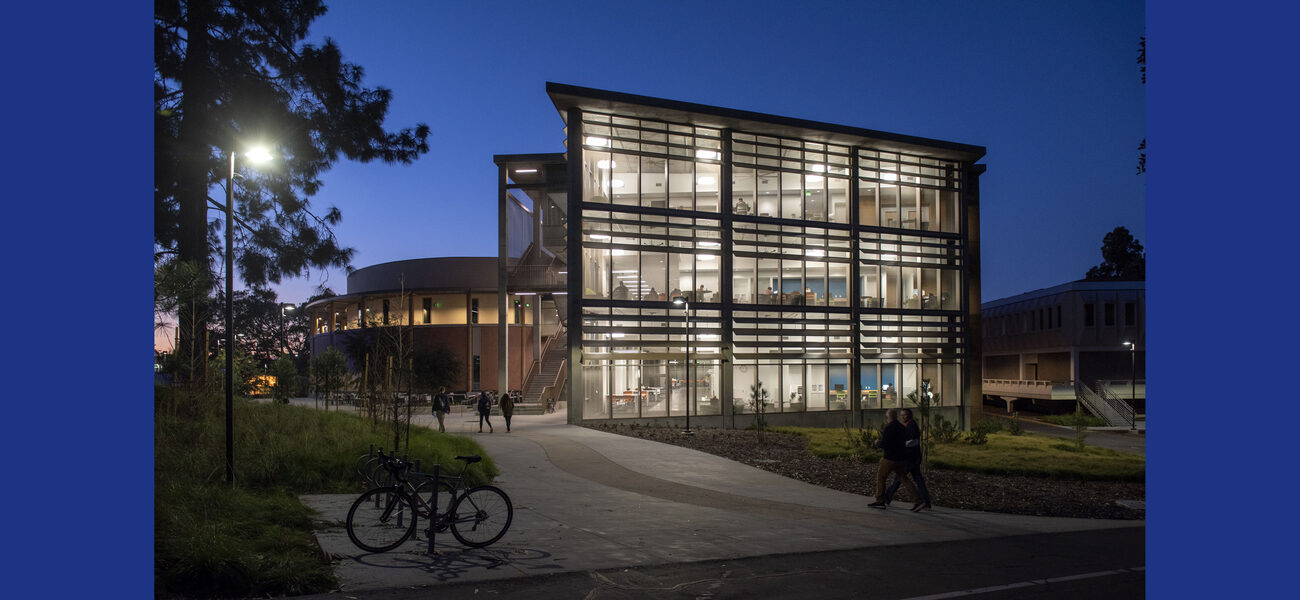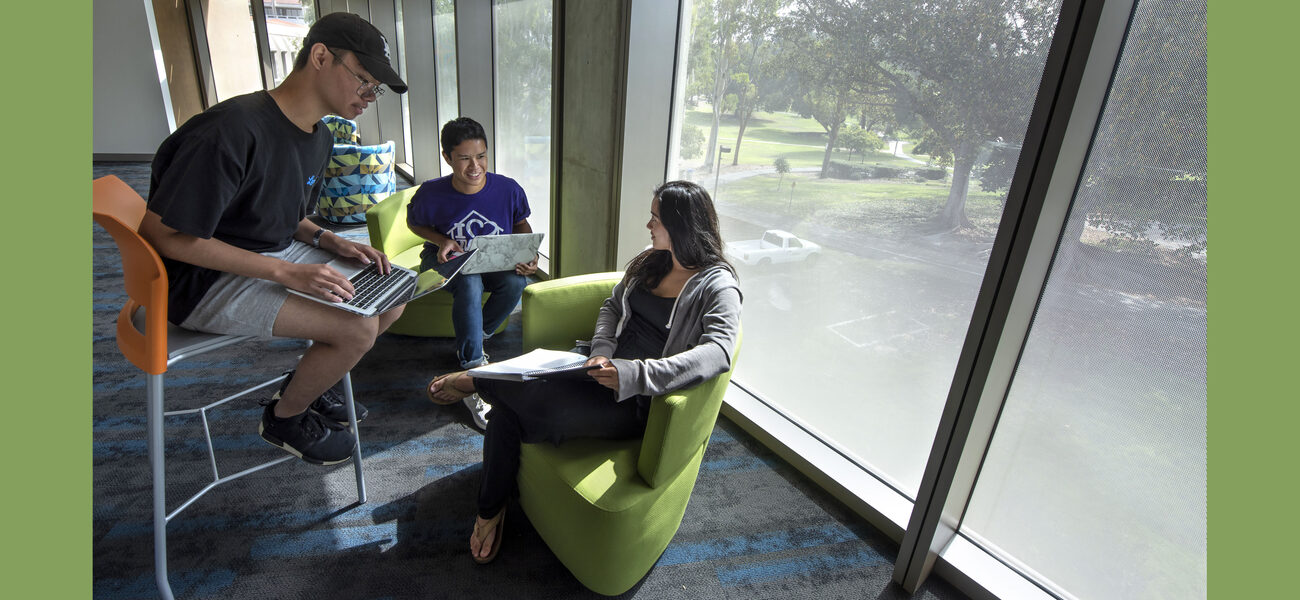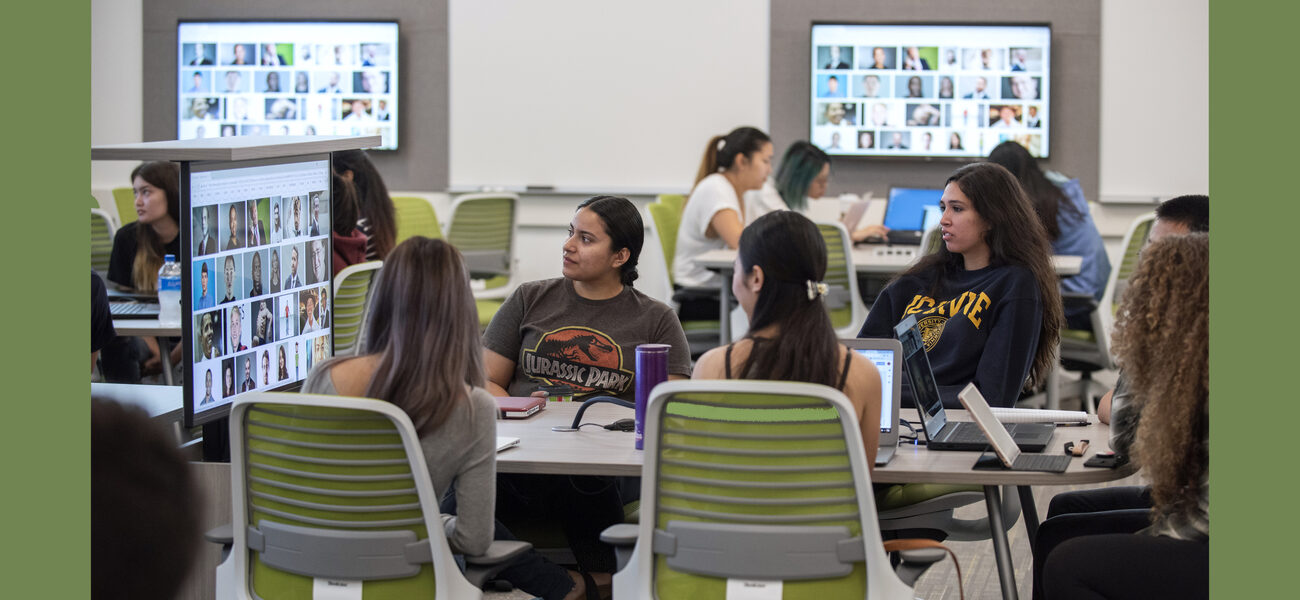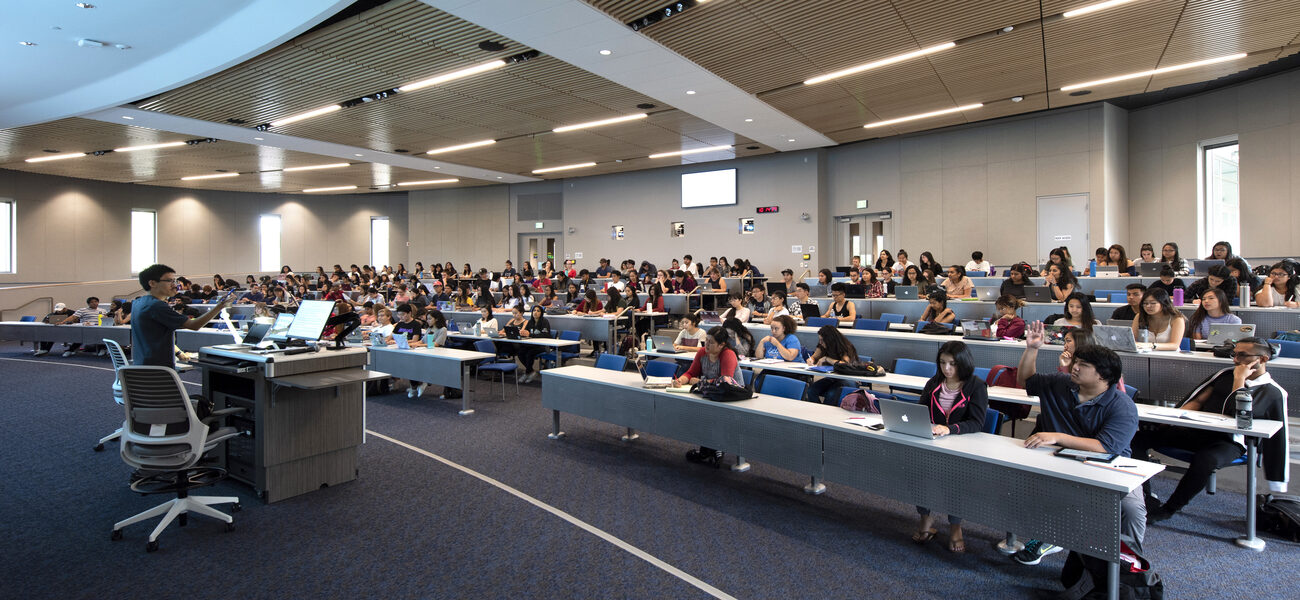The Anteater Learning Pavilion (ALP) at the University of California, Irvine (UCI) is the first university building in the state dedicated to using design and technology to increase innovation and collaboration. The three-floor, 94,000-sf ALP has flexible classrooms, mobile furniture, and wireless connectivity throughout, including projection and display technology, to make using technology in the classroom seamless. Opened in September 2018 for a total cost of about $67 million, the ALP provides much-needed room for growth, with a total of 1,446 instructional spaces, 392 informal learning spaces, and 44 staff offices. Michael Dennin, Ph.D., vice provost of Teaching and Learning and dean of the Division of Undergraduate Education at UCI, participated in the building planning committee, and encouraged the commitment to 100 percent active learning space.
“We determined that we needed to build for the future, and we could not have a building that wasn’t all active learning,” he says.
Research on learning styles shows that classroom design can impact how students and instructors interact and engage. In active learning, students not only listen to lectures and take notes, they are encouraged to talk and share ideas, demonstrate concepts using their laptops and wireless projection, even use their phones to respond to a quiz or poll. Professors are more likely to walk around the classroom than lecture from behind a podium. “Students are engaging with each other, and engaging with the material,” says Dennin. “The key is really some form of real-time feedback. It is fine to just let students talk in groups, but if they don’t know whether anything they did was good or not, it doesn’t really help them.”
The university reverted to remote learning during the COVID-19 pandemic, with the exception of a small number of courses approved for in-person instruction. But faculty were able to leverage the ALP’s robust technological infrastructure for recording or live-streaming lectures for students participating remotely.
Active Learning Space in the ALP
Many faculty members were open to the concept of active learning and were already using this teaching methodology, but some disciplines also wanted some traditional lecture hall space. The 400-seat lecture hall on the first floor and a 250-seat lecture hall on the second floor meet this need. Each is larger, longer, and narrower than a traditional lecture hall, with wider aisles, and two rows of tables with rotating seats and power at each seat. Faculty or trained grad students can easily move throughout the space, and students can turn their seats to talk to each other or do group work, which is an important component of active learning. “We recognize it’s a need we have. I was a little skeptical going in, but I’ve been very pleased with these spaces, and they are well used. You just have to be willing to build a slightly bigger space than you would if it wasn’t active learning,” says Dennin.
On the first floor, there are four 30-seat classrooms, an 84-seat classroom, and a 102-seat classroom. The two larger classrooms and three of the 60-seat classrooms have large shared displays for each group of six students, with two projectors per room that allow content to be displayed wirelessly from a laptop or mobile device. Each classroom also has multiple whiteboards and wheeled chairs to accommodate various seating configurations. “For the mid-size classrooms of 60, 80, and 100, we went with a pod design of rectangular tables. This was a bit of a compromise because these tables can, in principle, be moved to create a more traditional lecture-looking room, but so far, they have never been used for that. Everybody loves them in the pods,” says Dennin. The university provides a laptop for each collaborative six-person table with a shared display monitor. “If you are going to ask them to do collaborative work and use technology, you have to give them a laptop,” he says. “We aren’t at the point yet where we can assume every student is bringing a laptop to class.”
The building also has a 20-seat computer lab on the second floor. Two 50-seat computer labs on the third floor can shift into a combined 100-seat room by raising a ceiling-mounted partition. In the corridors, a mix of seating includes group tables, benches, and standing-only touchdown space, all with wireless connectivity. Four student study/meeting rooms on the second level each seat up to six students, and have computer and web conferencing equipment. Students can reserve these spaces for meetings or collaborative work. Each floor also has an informal student lounge overlooking an outdoor park. “All the classrooms are being used at or near capacity and we are seeing heavy use in the student lounges and informal seating areas. Those are a big bonus to the building,” says Dennin.
The Learning and Academic Resource Center (LARC) on the third floor has a dedicated office suite, six 16-seat tutorial rooms, and one 32-seat room, equipped with wall-mounted displays for wireless presentations. The Office of Information Technology (OIT), which provides classroom support in the building, is also on this floor. “This is our most tech-heavy building. It is the building most likely to have issues, so it makes sense for OIT to be here,” says Dennin.
Getting Certified
In order to get priority scheduling in the ALP, faculty have to become certified in active learning. The 16-week certification program accommodates up to 36 people per session, and meets every other week for about 90-minutes, with a classroom observation at the end. A few staff are also certified based on their previous experience. While the certification is not a requirement, most staff are motivated to get certified due to the scheduling advantages. Since the building opened, about 20 percent of the faculty have been certified, and more than 95 percent of the participants complete the program. “They come away with tools for using active learning in class. Ideally, we want to see that about half of class time is spent on active learning activities,” says Dennin. “The big thing is that as we develop a cohort of certified faculty, they go back to their department and become advocates for the program.” Based on data and assessments compiled since the building opened, faculty who have completed the certification program are about 1.4 times more likely to use active learning in the ALP. “It’s important to remember, you can’t just leave it to the space alone. The faculty need support to use the space the way it was intended. We have consciously not required people to become active learning certified, but we have seen a high level of participation,” says Dennin.
The certification process is based on a pilot program UCI ran the year before the building opened, using two existing classrooms that had been converted for active learning. They also used the year to test various scheduling options. Several faculty members who had experience in classroom observation protocols helped plan the observation and assessment component. Measures are based on scheduling data, faculty interviews, classroom observations, student surveys, faculty surveys, and course outcome. “Right from the beginning, we are observing people in the class and doing assessments. Our observations are mostly for aggregate data. We’re looking at how the building is being utilized for active learning, more than individual performance.”
The percentage of scheduled classes that are active learning has increased steadily since the ALP opened. As faculty continue to complete the certification, virtually all ALP staff are using this teaching methodology in their classrooms on a regular basis. They have also seen buy-in across the spectrum of faculty types. As of April 2019, 27 percent of certified faculty are full professors, including several named chairs, 33 percent are associate professors, and 39 percent are assistant professors. “We really are attracting everyone across the campus into the process,” says Dennin.
By Mary Beth Rohde



